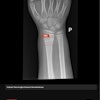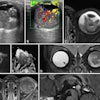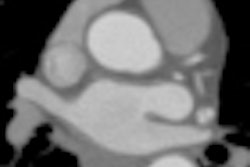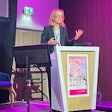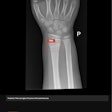
NEW YORK (Reuters Health) - Surprise findings on a chest CT scan -- unrelated to the original reason for having the 3D imaging performed -- may help identify people at high risk for cardiovascular disease, suggests a new Dutch study.
"In the last decade, image quality of chest CT scans has improved considerably. As a consequence, ancillary findings are encountered more and more in daily routine care," lead researcher Dr. Martijn Gondrie of University Medical Center Utrecht, in the Netherlands, told Reuters Health in an e-mail.
The bonus pictures would come at no additional cost to the patient, either in terms of radiation exposure or money out of pocket. But not everyone is convinced that they would be a useful addition to a doctor's diagnostic toolkit.
Since radiologists typically address only information requested when the scan is ordered, Gondrie and his colleagues wanted to find a way to distinguish the valuable from the useless amid all the other information contained in a chest CT.
The team chose to investigate images of the aorta, a large vessel usually clearly visible on a chest CT, in about 800 patients who had undergone the diagnostic test for noncardiovascular reasons. They compared these patients' aortic abnormalities -- including calcifications, plaques, and elongations -- to those from another 347 patients from the same population who experienced a cardiovascular event over the subsequent 17 months.
They graded the degree of calcification seen in an individual's aorta, for instance, on a scale of 0 to 8, and found that a one-point increase in the calcification score increased a patient's risk of experiencing a cardiovascular event by about a quarter.
When the researchers' predictive model accounted for the level of aortic calcification, as well as age, sex, and the reason for the chest CT, they found that patients in the top 25% of projected cardiovascular risk experienced 46% of all cardiovascular events, they report in the journal Radiology.
This model proved slightly less predictive than risk assessments typically used in clinical practice, such as the Framingham risk score. Adding information on other aortic abnormalities did not improve its predictive power.
"I don't think this is something I would use as a physician," Dr. Rita Redberg of the University of California, San Francisco, told Reuters Health. "By my clinical assessment, I already have a pretty good idea of what any of my patients risk is for disease."
"There are already more CTs ordered than are necessary," she added. "People order them as a means to diagnose coronary disease for patients that probably could've had other testing and clinical assessment, but I don't think these incidental findings will contribute to any more of that occurring."
Redberg also highlighted concerns over radiation exposure with CT scanning. A typical adult chest CT is equivalent to about two years of background radiation. And if a contrast-enhancing agent is used, risk to the kidneys could be posed too, she noted.
But the researchers stress that the additional findings come from scans that have already been performed for other reasons. "Using this information in the future is thus costless and comes without extra radiation exposure," Gondrie noted.
Cardiovascular disease affects more than 81 million Americans, according to the American Heart Association. "Timely preventative measures may ultimately reduce future cardiovascular events," said Gondrie.
In a separate report published yesterday in the Archives of Internal Medicine, Mayo Clinic researchers also concluded that incidental findings in medical images may benefit some patients. They examined several months' worth of medical images taken of research participants and found a tumor or infection unrelated to the study for which the images were originally made in about 40% of the subjects.
By Lynne Peeples
Source: http://link.reuters.com/mad85p Radiology, online September 28, 2010; http://link.reuters.com/nad85p Archives of Internal Medicine, September 27, 2010.
Last Updated: 2010-09-28 13:35:47 -0400 (Reuters Health)
Related Reading
Few adverse events occur a year after negative cardiac CTA, September 21, 2010
CT angiography gets nod for neonates with heart disease, August 26, 2010
AHA endorses cardiac CT for low-risk patients, August 24, 2010
ASIR cuts dose by 27% in coronary CT angiography, August 20, 2010
Enhanced reference standard boosts CTA accuracy, August 4, 2010
Copyright © 2010 Reuters Limited. All rights reserved. Republication or redistribution of Reuters content, including by framing or similar means, is expressly prohibited without the prior written consent of Reuters. Reuters shall not be liable for any errors or delays in the content, or for any actions taken in reliance thereon. Reuters and the Reuters sphere logo are registered trademarks and trademarks of the Reuters group of companies around the world.

